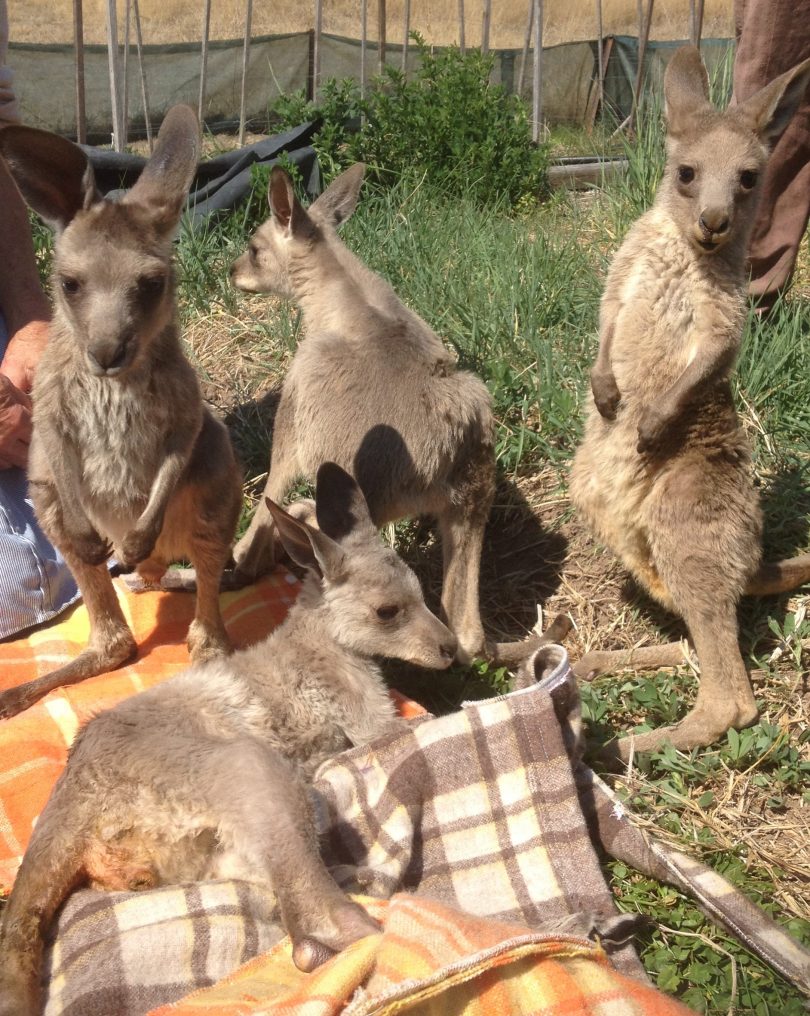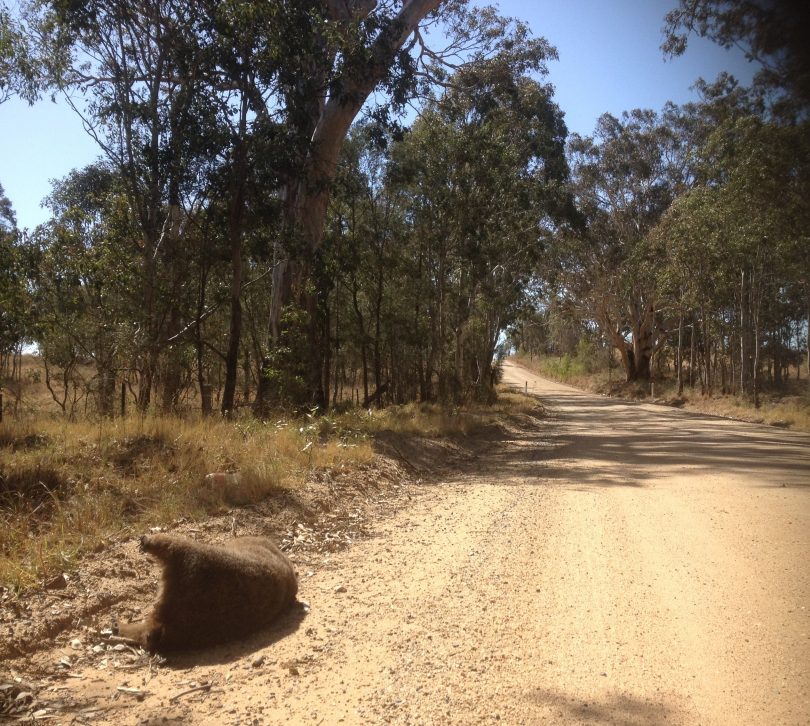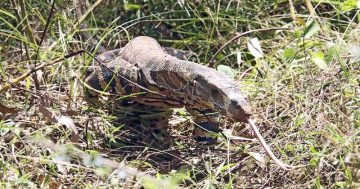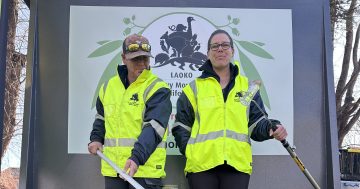
Joeys raised by a WIRES volunteer in Candelo. Photos: Elka Wood.
The far south coast branch of Wildlife Rescue [formerly NANA] is asking for government action to address the high number of deaths of native animals on our roads, outlining two separate but related issues in a letter to Hon. Gabrielle Upton, the Minister for the Environment.
The letter, which was sent on November 28th, was also sent to local members and Shadow Minister for the Environment Tony Burke.
Wildlife Rescue president Dani Ondinea writes that the group is requesting changes to speed zones on some roads, increased driver education and financial support for wildlife welfare groups and volunteers.
“Many people don’t know that wildlife rescue groups don’t receive government funding: we are volunteers and we do the fundraising ourselves,” says Pambula -based volunteer Linda Klunz, who is currently raising five baby kangaroos whose mothers were road hit.
“Speed limits on known high-death areas such as Sapphire Coast Drive are one thing we are asking for, but we’re also asking for funding,” Klunz says, adding that there are not many volunteer positions which, as well as time, require regular outputs of money.
The group has reached a limit – frustrated with high numbers of road deaths and the public perception that the groups are funded by the government and are therefore a free public service.
Pulling dead animals from roadways and euthanizing seriously injured animals is sometimes done by police officers, sometimes by those who hit the animal and sometimes by wildlife rescue members or vets.
Rescue groups provide rehabilitation for wounded animals and nurseries for infant animals but another, often unseen part of the job is the work of moving dead animals from roadways and checking pouches for infants, often at night.

A road-hit wombat near Candelo.
South Coast Wildlife Rescue works hard to maintain a 24-hour hotline, the letter explains, and their availability to attend to road-hit animals frees up the police, who often have higher priorities.
“My husband purposely goes out to clean up the road about three days a week and more on public holidays,” says Wombat Protection Society president Marie Wynan of Nimmitabel. “You don’t think about it much, but the petrol, wear and tear on the vehicle, it all adds up.”
As Wynan’s experience shows, the financial commitment goes beyond the cost of milk for infant animals – approximately $500 per kangaroo or wallaby and $800 per wombat.
“People – bless their hearts – go without or go into debt to take care of animals,” Klunz says.
Wynan says that although dry conditions and loss of habitat due to logging and farming cause the animals to move around more, it’s the fact that people “just don’t care,” about hitting animals that means more are being killed on the roads.
Although she is a former vet nurse and familiar with the death of animals, Wynan says that the strain of “scraping bodies off the road,” leaves her and her husband “mental wrecks” but they do it because “nobody else is.”
WIRES member Janine Green, of Merimbula, is also a former vet nurse who now owns the Kingfisher motel in Merimbula.
“I’m one of the few rescue group members with a license to euthanize,” Green says “so I’m often saying ‘back in half an hour, gotta go shoot a kangaroo.’”
Green, like Wynan, is not compensated for her services, the interruption to her work, her travel or the bullets and drugs she uses to euthanize.
Keenly aware of budget issues, Green says there’s no point in WIRES spending a precious $1000 paying a vet to put a pin in a kangaroo’s leg.
Green is unsentimental about her “hobby,” although she usually has in her care four or five “pinkies,” [kangaroos, wallabies or wombats whose fur has not grown yet] and has bought 200 acres in Wyndham specifically for released rehabilitated animals.
“When I show up and there’s a big kangaroo with a broken leg and people are expecting an ambulance,” Green says “what am I going to do? Lift it into my car? No, I’m sorry, grey kangaroos are common, I’m going to shoot it and put the poor thing out of its misery.”
Green takes delight in caring for unusual species such as marine turtles and yellow-bellied gliders, and says that in the case of rare and endangered animals and birds, WIRES is willing to spend the money.
Vet bills are among the costs to wildlife carers that can add up quickly, and finding a vet who will treat native animals pro bono is key to their success.
Peter Alexander is a veterinarian and partner at Bega-Cobargo vet hospital, which is one of the vets in the Bega Valley who will treat native animals for free or at the cost to the clinic in the case of drugs or diagnostic imaging.
“Our policy is that we look at any genuine side-of-road case brought to us for free,” Alexander says.
Although Alexander and his fellow vets are happy to help during work hours, it’s the after-hours calls where they draw the line.
“If I get a call at 2 am to go and euthanize an animal on the side of the road, I’ll do it but at that point, you have to pay our after-hours call fee and pay for our service,” Alexander explains.
Alexander warns that he is, at heart, “an environmentalist,” and, because of this, he believes a solution is needed which goes deeper than rescuing and rehabilitating road-hit native animals.
“The real problem is lack of habitat for animals because of deforestation,” Alexander says.
Alexander recalls a recent trip to Lao, where he volunteers with the Mekong Livestock Research group and says that because most of Lao’s population are Buddhist, it is considered bad karma to hit animals, so although chickens and buffalo roam free, Alexander could not see any evidence of road deaths.
Changing the culture of driving begins with drivers education, and as Wynan sees it, one of the problems is that drivers don’t see dawn, dusk and high-use animal corridors as a road condition.
“Our law says we must drive to road conditions,” Wynan says “dawn and dusk are road conditions because that is when animals are out and when you are most likely to hit one, so you need to slow down at those times.”
Klunz agrees. While travelling around Australia she realized that some tourists were misunderstanding the yellow roadside signs with a kangaroo silhouette and a distance on them.
“People didn’t know that it meant to slow down and watch out,” Klunz says. “They just thought ‘oh good, we’ll see kangaroos.”
Wynan says that if she were a tourist she would “jump on a plane and leave immediately” after seeing the roadside strewn with dead native animals.
It’s not only to reduce their own workload that rescue groups are petitioning for changes – appealing to the region’s growing market for tourism, the letter states: “wildlife rescuers and carers reduce the distress of wildlife but also the distress of visitors and residents.”
Member for Bega Andrew Constance was sent the letter and said in a phone call on December 7 that he is always happy to support local volunteer organizations, and that his mother-in-law has been involved with wildlife rescue groups.
“Our office will make representation to the Minister of Environment about the issue,” Constance said.
Constance also indicated that there may be community grants he could point the Wildlife Rescue group towards.
As well as the changes specified in the letter – to reduce the default speed limit of 100 km on dirt roads to 60 km and to reduce the speed limit on sections of Sapphire Coast Drive from 100 km to 80 km – members of wildlife rescue groups have also looked into installing flashing wildlife crossing signs and even virtual fencing which warns animals a car is coming.
“Virtual fencing has been proven to reduce wildlife deaths by seventy per cent, “ Wynan says. “They’ve tried it in Tasmania to protect Tasmanian Devils, but, obviously, it’s expensive.”
Road-killed wildlife is not positive for anyone – animal lovers, car lovers, safety lovers, the police, vets, wildlife rescue groups, the public or insurance companies.
If the police and vets are paid to be on call and to deal with road hit animals, shouldn’t wildlife rescuers who do the same job be similarly paid? Perhaps the problem is, as Alexander says, that we are “lulled into a false sense of security” knowing that good-hearted volunteers are cleaning up after us – for free.








